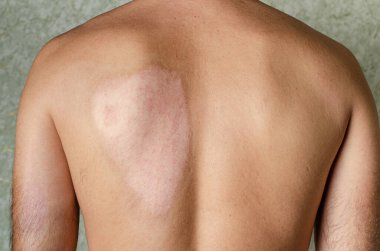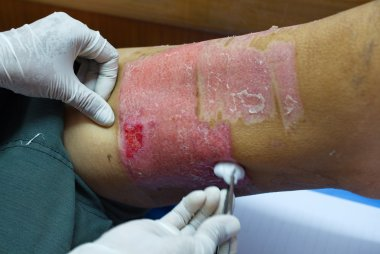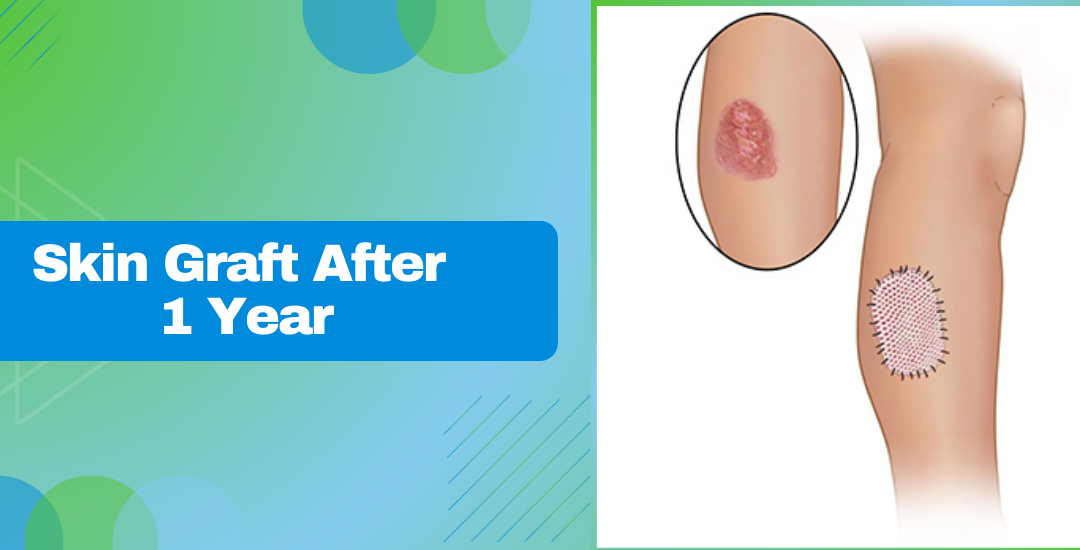Appearances influence our self-esteem and interactions with others, often more than we might realize. Skin grafts serve as a transformative solution, restoring the functionality and aesthetics of severely damaged skin.
Dr. Leena Jain, a renowned plastic surgeon in Borivali, explains:
“Skin grafts are often necessary for patients who have experienced significant skin loss due to burns, trauma, or surgery for conditions like skin cancer. By replacing or repairing damaged skin, grafts help mitigate long-term complications and support the body’s natural healing processes.”
Globally, the demand for skin grafts is rising, particularly in regions with higher traumatic injuries and burns rates.
Dr. Jain, a trusted plastic surgeon in Mumbai, adds:
“Skin grafts are critical for restoring the skin’s protective barrier and play a pivotal role in improving aesthetic appearance and enhancing functional recovery. However, patients must have realistic expectations and understand the recovery journey.”
Have you experienced a situation that requires skin grafting? Consult a qualified plastic surgeon to discuss your options and receive personalized advice.
Are you wondering about the appearance of your skin graft after 1 year? Keep reading to find out!
What Should a Skin Graft Look Like After 1 Year?
The area of skin graft after 1 year should display significant healing and integration with the surrounding tissues. Although the graft may still show a slight color variance—either paler or darker—it should be less pronounced than in the earlier months. The texture will likely have become smoother, though it may still feel slightly firmer or more raised than the original skin.

Dr. Leena Jain, an eminentplastic surgeon in Borivali, adds:
“Any initial redness or swelling would typically have resolved at this stage. There should be no signs of irritation or discomfort, suggesting that the graft has successfully adapted to its new location. Always monitor the graft’s progress and stay alert about unusual changes.”
Are you dealing with itching even after a year of skin graft surgery? Here’s what you need to know!
Is It Normal to Experience Itching in the Area of Skin Graft After 1 Year?
Yes, some itching in the skin grafting area, even after a year, is normal. As the nerves regenerate, sensations such as itching can occur. This is often a sign of the ongoing healing process of skin graft. However, the intensity of the itching should be mild and not disrupt daily activities. Itching can be more pronounced in the graft donor site which also subsides in this much time.
Dr. Leena Jain, a dedicated plastic surgeon in Borivali, cautions:
“Persistent, severe itching or discomfort might require attention from your healthcare provider to ensure no underlying issues are affecting the graft.”
Are you experiencing prolonged itching after a skin graft? Please visit a certified plastic surgeon to ensure proper healing and care.
Let’s look at how your body alerts you to complications of skin graft after 1 year.
Signs of Complications in a Skin Graft After 1 Year
Most of the healing of a skin graft after 1 year should be complete. However, it’s crucial to remain vigilant for any signs of complications. Here are potential indicators of skin graft complications:

Redness or Swelling:
While some initial redness is normal, persistent redness or swelling after a year may indicate inflammation or infection.
Increased Pain:
Any new or intensifying pain around the graft site could indicate underlying issues such as nerve damage or infection.
Recurring Bleeding:
Occasional blood spots are standard in the early stages, but continual bleeding at the graft site after a year could be a concern.
Changes in Skin Texture:
Hardening or thickening of the graft beyond the normal healing process may suggest excessive scar tissue formation, known as hypertrophic scarring. Usually hypertrophic scars are common in grafts done for burns patients and at junction of graft with normal skin.
Color Changes:
Unusual color changes, such as persistent darkening or lightening of the graft area compared to surrounding skin, can be a cause of unfavorable or unsatisfactory result.
It’s essential to monitor these signs and consult with your healthcare provider if you experience any of them to address potential complications promptly.
Caring for a skin graft in the long term is crucial to maintain its health and appearance. Here are some essential tips!
Skin Graft Long-Term Care
Certain injuries like burns or medical conditions like skin cancer may necessitate skin grafts to restore functionality and appearance. Here are practical tips for long-term care of a skin graft:
Keep the grafted area well-moisturized to prevent dryness and help maintain skin elasticity. Use a hypoallergenic lotion or cream recommended by your healthcare provider. Grafts need moisturization for at least a year after grafting. It is of benefit to continue the moisturization beyond a year.
Apply a broad-spectrum sunscreen with an SPF of 30 or higher to the graft and surrounding skin to protect against UV damage. Consider wearing protective clothing and seeking shade during peak sun hours.
Regularly inspect the graft for any signs of color change, discomfort, or abnormal growth. Early detection of issues can facilitate prompt treatment.
Avoid harsh chemicals, including certain soaps and cosmetics that can irritate the skin. Choose products that are gentle and suited for sensitive skin.
Support skin health from the inside by eating a balanced diet rich in vitamins and minerals, particularly those that aid skin repair and health, like vitamin C, vitamin E, and zinc.
Stay hydrated to maintain skin moisture levels and overall skin health, which is beneficial for the healed graft area.
Keep regular appointments with your healthcare provider to monitor the long-term progress of your skin graft and discuss any concerns you may have.
Are you unsure about the best ways to care for your skin graft? discuss with a seasoned plastic surgeon for personalized advice and support.
Conclusion
Understanding the full scope of care and maintenance required after skin graft will ensure the best possible outcomes for skin graft patients. Plastic surgeons like Dr. Leena Jain can be invaluable in these scenarios, providing expert care and guidance.
Seeking professional advice! Take the first step towards recovery and improved quality of life.
Got questions about skin grafts? Check out these FAQs for the answers you need!
FAQs
Are skin grafts permanent?
Yes, once a skin graft has successfully taken and integrated with the surrounding tissue, it becomes a lasting part of the body’s skin architecture. The transplanted skin replaces damaged or missing skin and continues to function as normal skin over time.
How do I know if my skin graft is healing?
A healing skin graft typically shows signs of progressive integration with the surrounding skin, including stable coloration and decreasing discomfort. You should notice gradual improvement in the texture and flexibility of the grafted area.
What are the signs of skin graft failure?
Signs of skin graft failure include persistent redness, increased pain, and swelling at the graft site, along with possible discharge or a foul odor, which could indicate infection. Additionally, if the graft appears darkened or black, it may be a sign that the tissue has not successfully connected with the blood supply and is dying.
What is the alternative to a skin graft?
Alternatives to skin grafts include:
- Tissue expansion allows the body to “grow” extra skin by stretching surrounding tissue.
- Local flap surgery involves moving healthy skin from a nearby area to the wound site.
- Artificial skin products, made from collagen or synthetic materials, can also be used to cover large skin defects and promote healing.

